Compact disc players have been touted as the ''perfect" music source, and manufacturers are quick to point out their flawless technical specifications.
But what exactly do these specifications mean, and are they indeed flawless? How can you interpret performance tests done by independent reviewers so that you know when a machine is good or bad? Do specifications really have a bearing on how good a certain compact disc player sounds? The following is an explanation of compact disc player specifications and the performance you can reasonably expect from a typical model.
FREQUENCY RESPONSE
Basically speaking, frequency response is the sonic range that the player can evenly and accurately reproduce. Frequency response is specified in Hertz (Hz), and with compact disc players, extends theoretically from 5 Hz to 20 kHz. This sonic range is effectively the range of human hearing, although most people can't hear extremely low or high sounds. A more reasonable hearing range for most adults is 100 Hz to 13 kHz.
In the first sent ence of the paragraph above, note the words evenly and accurately. When a series of test tones are played through the CD, every frequency in the 5-20,000 Hz range must have the same level as the others. When this happens, the frequency response is said to be flat, and is expressed in specifications lit erature as 5 Hz to 20 kHz, ± 0 dB.
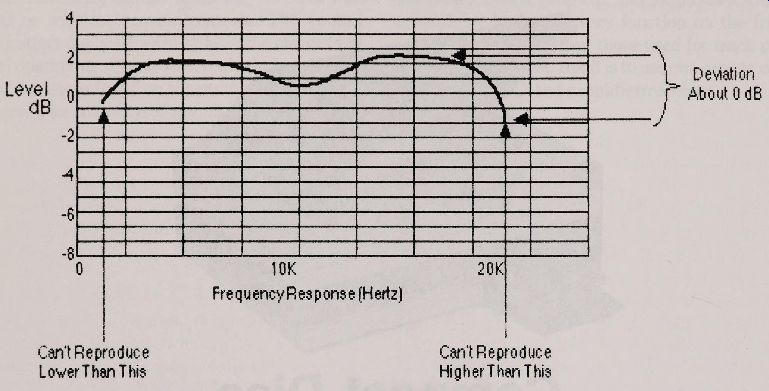
Fig. 3-1. A visual representation of frequency response.
Of course, the tones in real music are seldom even; never theless the CD player should be able to accurately reproduce those tones as they were originally performed. It’s a simple matter of what goes in must come out.
Frequency response is a two-prong specification. You can get a clearer view of this by referring to Fig. 3-1. On one hand it’s the sonic range that the player can reproduce, and on the other, it’s the accuracy at which the frequencies can be reproduced relative to the original recording. In reality, no CD player has a perfectly flat frequency response of 5 Hz to 20 kHz. Most get up to about 18 kHz, where the amplitude of the high frequencies starts to diminish. By the time 20 kHz comes around, the tones have decreased in power level by 0.25 to 2 dB. The two stereo channels are most often tested separately, but not always.

Fig. 3-2. An unfair comparison of compact disc and cassette tape.
A CD player that has a greater deviation from 0 dB at high frequencies isn't necessarily worse than any other player. It’s a rare amplifier and speaker that can recreate frequencies beyond 17 kHz, so a little drop or increase at the very high end is hardly noticeable. Compare the frequency response of the compact disc player to that of a cassette deck, as shown in Fig. 3-2. Cassette tape, like all analog recording methods, has a narrower frequency response, and can’t accurately reproduce sounds under 100 Hz or above 10 to 12 kHz.
SIGNAL-TO-NOISE RATIO
The signal-to-noise (or S/N) ratio refers to the ratio of music you want versus the extraneous sounds you don’t want. The noise usually appears as hiss. Refer to Fig. 3-3. The idea is that the more noise there is, the less space there is for the music, so S/N actually measures the amount of amplitude space available for playback. It should be noted that S/N is not a measurement of the playback medium (in this case the disc itself ), but specif ies the amount of analog noise, in relation to the desired signal, that is Introduced by the player’s electronics.
In a CD player, some analog noise is created n the digital processing circuits, and a little mores generated by the D/A converter, the analog filer (if any), and preamplifier circuits. Because of his, CD players have a very low S/N ratio compared to other hi-fi gear, like cassette decks.
In specifications sheets, S/N appears as a ratio between a 0 dB signal and the background noise.
A specification of 80 dB means that there is 80 dB of signal strength between the main signal and the noise. Theoretically, CD players have a S/N ratio of 97.5 dB, but in real life, the figure is a more reasonable 90 dB or so. The higher the dB, the better.
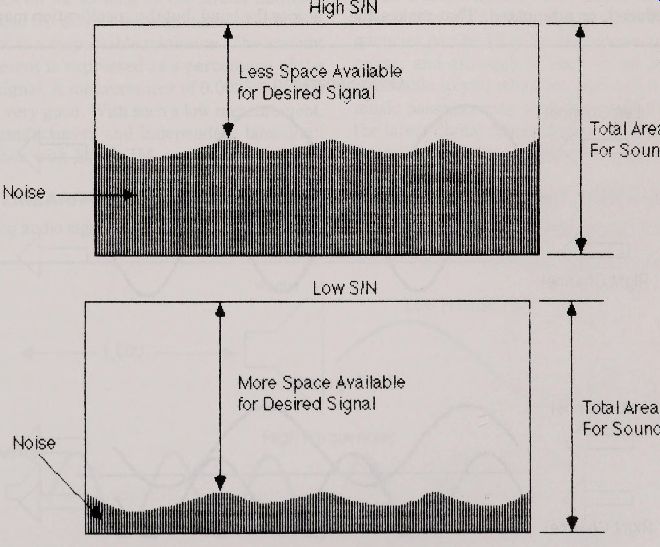
Fig. 3-3. Signal-to-noise, and how it affects the quality of the signal.
S/N measurements can be made in a variety of different ways, and you’ll see a wide variation be ween what a manufacturer claims for his machine and what an independent reviewer may test.
Most manufacturers insert a band-pass filter between the player and the test rig that cuts off frequencies under 4 Hz and over 20 kHz, supposedly to block out-of-band (inaudible) noise components.
The reasoning is that the noise components can't be heard, but they are picked up by test gear and can give erroneous (usually lowered) test results.
Some critics say this isn't an accurate assessment, because the harmonics of some of the out-of-band components can actually cause some audible noise, and this would be present during normal listening.
When comparing S/N specifications try to ascertain whether the measurement was made with or with out a filter. S/N tests made with and without a so-called weighting network can vary greatly.A weighting network puts more emphasis on certain frequencies than others. The network used with most CD player tests is A-weighted, where the lower frequencies are reduced, or at tenuated. That makes the overall S/N figure appear better.
CHANNEL SEPARATION
Figure 3-4 demonstrates channel separation, measuring the leakage of signals that can occur be ween the right and left stereo channels. When signals from the two channels bleed into one another, here is said to be crosst alk. As you may have guessed, channel separation with compact disc is extremely high, because the music is digitally pro cessed.
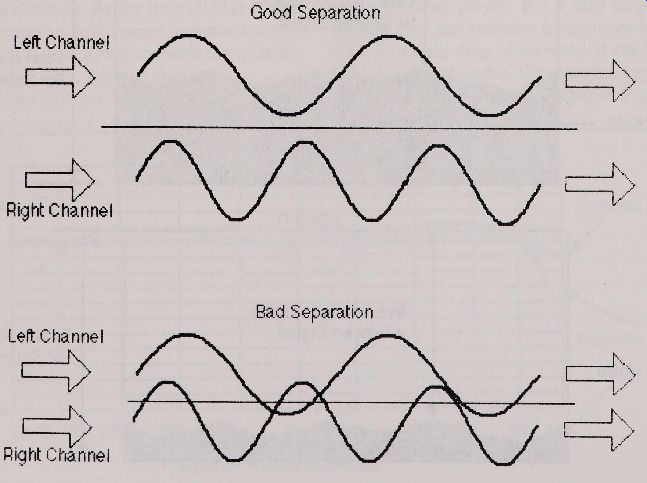
Fig. 3-4. Good and bad channel separation.
Channel separation is expressed as an ampliude in dB, like signal-to-noise. The figure is usually a negative number, such as -90 dB, or at lest as sumed to be a negative number even when it is expressed without the minus sign. The -90 dB specification means that signals from the opposite channel are 90 dB less in int ensity than signals from the present channel. Channel separation changes at various frequencies, so the test is usually made across the band, but the specification may indicate a specific frequency, usually 1 kHz. Most CD players have a channel separation of -85 dB or greater. The higher the number, the greater the separation, and of course, the better the sound.
INTERMODULATION DISTORTION
Intermodulation distortion, or IM for short, is what happens when analog circuits create brand new frequencies out of the ones being processed.
If two frequencies are input into the player, a series of sum and difference frequencies might be generated by the analog circuits (digital circuits do not create IM).
As an example 100 Hz and 1000 Hz signals go into the player circuits, intermodulation distortion would be created if the circuits generated a difference frequency of 900 Hz and a sum frequency of 1100 Hz. In reality, many other less int ense frequencies are created out of these new ones, and the effect goes on for as long as the circuit allows.
Because CD players have little analog circuitry, IM is kept to a respect able minimum. The amount of IM present is expressed as a percent age of the original signal. A measurement of 0.0025% or less would be very good. With such a low measurement, many manufacturers and independent labs don’t even bother with listing IM.
PHASE LINEARITY
Analog audio signals are sine waves. The crests and valleys undulate with time. The timing of the wave, in relation to some reference point, is called phase, and is expressed in degrees. A wave that’s properly timed with its reference point has a phase of 0 degrees.
Phase linearity measures the ability of the compact disc player to reproduce frequencies without creating what is known as frequency dependent time delays. Imagine a speaker System, like the one in Fig. 3-5, where the woofer (the bass part ) is right in front of you, but the tweeter (the high frequency part) is 1,000 feet behind it. Put a sound through the speaker System and you hear the woofer im mediat ely; the tweeter is delayed over a second, that’s a frequency dependent time delay.
Delays of this nature do not occur with such severity in CD players, but there is some measursounds in relation to their low frequency counterable delay-in all CD players-of high frequency parts. The problem is worst when the player has a poorly designed analog output filter. The high frequencies can be 10 to 90 degrees (or more) out of phase, and although it may not be immediately noticeable to you when you listen to a disc, some music passages may sound strange. Players with the latest digital filters tend to exhibit less phase linearity Distortion-usually five degrees or less.
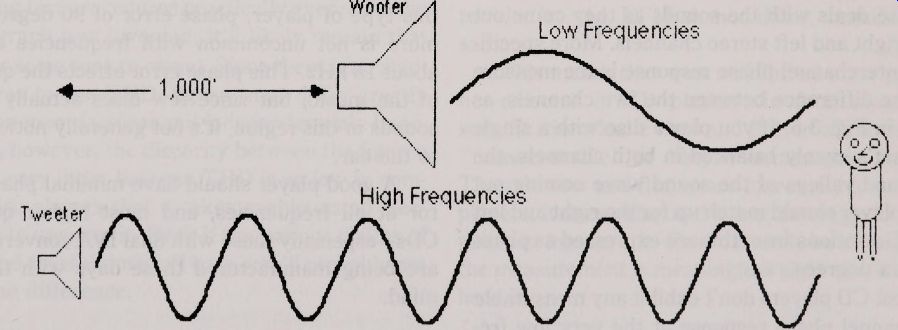
Fig. 3-5. Frequency dependent phase distortion (or delay) is similar to
placing a woofer and tweeter apart, and listening to the music. The high
frequencies reach the listener after the low frequencies.
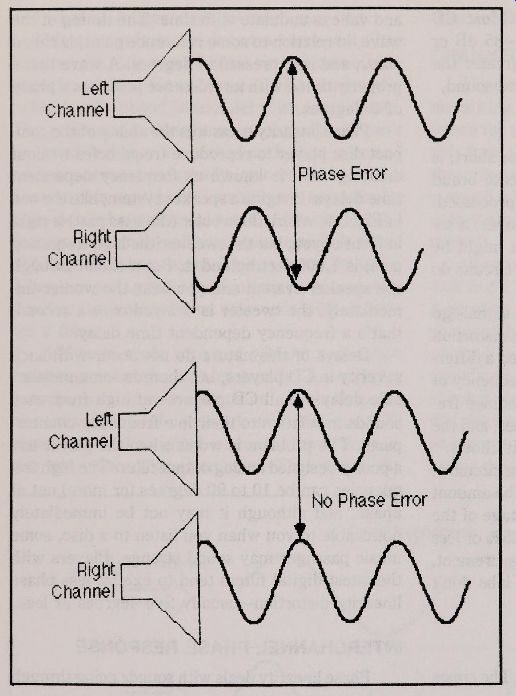
Fig. 3-6. A graphic representation of phase error.
INTERCHANNEL PHASE RESPONSE
Phase linearity deals with sounds going through one channel of the CD player ; interchannel phase response deals with the sounds as they come out of the right and left stereo channels. More specifically, interchannel phase response is the measure of phase difference between the two channels, as shown in Fig. 3-6. If you play a disc with a single tone that’s evenly balanced in both channels, the peaks and valleys of the sound wave coming out of the player should match up for the right and left sides. Deviations from this are expressed as phase error, in degrees.
Most CD players don't exhibit any measurable interchannel phase response at the very low frequencies, but there is often a marked phase error with higher tones. This is especially true if the player incorporates a single D/A converter. With this type of player, phase error of 90 degrees or more is not uncommon with frequencies above about 15 kHz. This phase error affects the quality of the music, but since few discs actually have sounds in this region, it’s not generally noticeable to the ear.
A good player should have minimal phase error at all frequencies, and most higher quality CDs-especially those with dual D/A Converters are being manufactured these days with this in mind.
TOTAL HARMONIC DISTORTION
Total harmonic distortion, abbreviated THD, is considered one of the most important specifications for any piece of audio gear. With compact disc players, THD is extremely low, so low in fact, that the limiting factor of the quality of your hi-fi is your amplifier, speaker, and cables. With CD, THD is really not an important consideration, although you may want to keep it in the back of your mind when evaluating a player.
THD measures the ability of the CD player to reproduce a signal without contributing additional frequency components--harmonics--of its own.
Harmonics are sub-frequencies that are mathematically related to the main fundamental tone. For example, concert A note on the piano is considered to be 440 Hz in frequency. In actuality, the note is comprised of additional harmonics that are even and odd multiples of this frequency.
THD is measured as a percent age of newly created distortion in relation to the original signal.
It varies in respect to both the amplitude of the sound and its frequency, so tests are made with specific tones and certain pre-determined levels. A typical test specification of THD for a CD player might read "0.05% at 1 kHz," meaning there is 0.05% or less THD when tested at 1 kHz. Some testers also tell you the signal level, which should be 0 dB. The 0 dB figure corresponds to the maxi mum amplitude possible without "overriding" the sound into distortion.
Manufacturers and independent labs employ a variety of THD tests, and there is a great debate over which is the right way (audiophiles have been debating test procedures practically ever since the phonograph was invented; it’ll likely remain that way for some time to come). Since there is no stan dard way to test THD, figures may differ greatly between manufacturer and independent lab. In actuality, however, the disparity between the figures means very little, because THD is so low in compact disc players that it takes sophisticated electronics to uncover it. Even if the various claims of THD are several times off base, you'll probably not hear the difference.
DYNAMIC RANGE
In basic terms, dynamic range is the difference between the softest and loudest por tions in a music selection. CD players have a theoretical dynamic range of 96 dB, which means there is a 96 dB difference between the most quiet and most loud pas sages in the music. In pract ice, the dynamic range is more like 85 dB to 90 dB, which is more than accept able. These figures are really applicable for laboratory test s; it’s unlikely you'll ever find a piece of music with this kind of range-the 1812 Overture included. Dynamic range is not as important as the other specifications we've discussed, unless the CD player is very poorly designed.
WOW AND FLUTTER
Wow and flutter are speed changes during play back that affect the pitch of the sound. Imagine playing a 1000 Hz tone through the CD player.
Wow would cause the tone to glide slowly from, perhaps, 1050 Hz to 950 Hz. Flutter causes the same frequency (pitch) changes, but the affect is fast, like the warble of a European police siren.
The playback of a compact disc is carefully regulated by a microprocessor running under a highly accurate quartz crystal. During playback, data from the disc is temporarily stored in random access memory (RAM), which acts as a kind of reservoir. The RAM is filled to half capacity, and maintained there. Changes in the rot ational speed of the disc are compensated for by the data in the RAM. If the disc goes too slow for a time, the microprocessor speeds up the disc to compensat e.
But the rate of data coming from the RAM, and trickled to the EFM demodulator, remains the same.* This means thatwow and flutter are virtually non-exist ent in CD players.
In fact, most test specifications leave wow and flutter off, or label it ''immeasurable or below measurable limits." Though wow and flutter are extremely low in CD players, it does exist, and some testers go to great pains to measure it. Rest assured, however, that the measurement is meaningless since you'll never hear it.
ERROR CORRECTION
Error correction is not a test that manufacturers regularly perform and list in their specifications, but it’s an important one for compact disc players. Most independent labs have some test for error correction, although most are quaint and unscient if ic. It’s not unusual to '‘test " error correction of a given CD player by whacking it on its side or top. If the player can take a heavy jolt without skipping, it’s considered to have either good shock absorbers on the optical pickup, good error correction, or both.
Philips, co-inventor of the compact disc, sells a test disc labeled TS4A. This disc, which is available at some hi-fi dealers and larger record stores, is designed with deliberate flaws for testing error correction circuitry in a CD player. You can use the disc to test your player (as either a preventive or corrective Maintenance procedure), or any player that you may be evaluating.
The disc has simulated fingerprints, scratches, and dust part icles. By listening closely to the playback, you can tell if the player has poor, average, or above average error correction. Additional information on this disc, and how to make your own, can be found in Section 5.
Compact Disc Errors
The compact disc System is protected from the audible effects of all but the most gross data errors by a completely digital error correction System.
There are actually two separate digital error correction schemes used in CDs: parity data (or redun dant data) and Cross-Interleave Read-Solomon Code, or CIRC (interleaving for short ).
The design of the compact disc player optics compensat es for many of the effects caused by dust, dirt, and scratches, because the laser beam focuses past these surface obstructions.
There are four degrees of severity of compact disc errors, and each degree determines the type of correction the player employs. One player may handle a particular type of error better than an other, so it is important to break them down.
Fully Correctible Errors. As stated before, light scratches and small dust part icles are usually not even noticed by the CD player optics. A speck of dust 0.5mm in size on the surface of the disc is out of focus to the laser ; reduced to one millionth its original size.
However, a heavier scratch or larger dust part ide, say one that’s 2mm or so in size, will not en tirely escape the laser beam. Such an obst acle would block several tens or hundreds of pits and the player would recognize the loss of data as dropouts. These dropouts are corrected by the parity data inserted with each frame or audio. Such minor dropouts are fully Correctible and are not audible.
Concealed or Interpolated Errors. Some times, an obstruction may block too many pits, and the parity data will not be able to reconst ruct it. Because the data on the disc was encoded using a CIRC interleaving technique, the player can, in many cases, reconst ruct the missing pieces by using interpolation (Fig. 3-7).
With some players, especially the early models, interpolations are sometimes noticeable as clicks or low-level distortion. But most interpolations on present day players are inaudible.
Muting Errors. Let’s say you've really gouged a disc and a large portion of it is damaged.
It still plays but there is a long string of unconceal able data. There is no usable parity data and there is insufficient data to reconst ruct the audio using interpolation. The player has one recourse left : mute the audio. The analog muting process involves turning down the volume of the music until theerror has gone by. The volume is then turned back up. This happens very fast, and the muting circuits are damped-they turn the volume up and down gradually--so the error is not as noticeable as you may think.
Detracking Errors. A tracking or focusing error is when pits on the disc are blocked or damped so completely that the laser goes off course.
Detracking errors can also be caused by external vibration knocking the pickup out of place. In ei ther case, the result is skipping, like on an LP record. You can test the resistance a player has to serious disc damage, and its immunity to focus and tracking error, by using the TS4A test disc, or one of your own design.
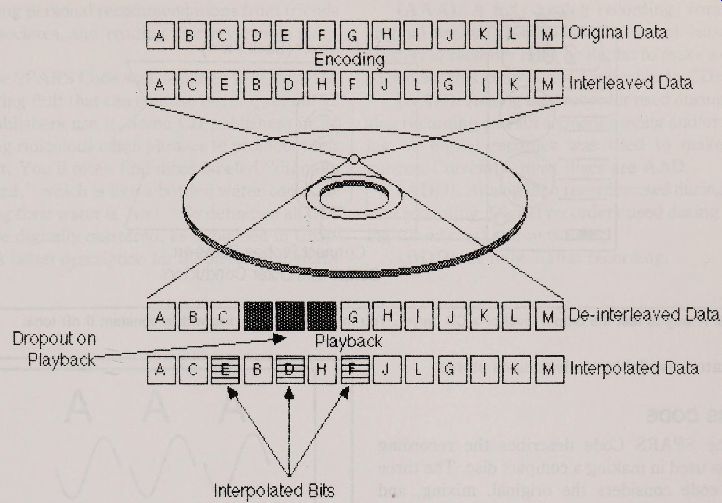
Fig. 3-7. Interleaving at tempts to replace missing data by interpolation--examining
the data on either side of the absent information and approximating a new
value.
OUTPUT VOLTAGE
This specification measures the voltage of the audio output terminals located on the back of the CD player (and sometimes the level of the headphone jack). Compact disc players are supposed to have a 2 rms volt level (when measured with a 0 dB signal), but few are this exact. You'll find models that vary from a little over 1 volt to well over 10 volts.
How does the output voltage affect CD player performance? In most cases, it does not, but it does have a bearing on how well the player interfaces to your hi-fi System. The higher the output voltage, the higher the sound level will be at any given volume on the amplifier. So if you are switching from a cassette deck with a normal output voltage, to a CD with an abnormally high output voltage, you must remember to turn down the volume on the amplifier.
Some of the better compact disc players have a variable output control, so you can tailor the voltage to better match your System. With a voltmeter connected to the outputterminals (Fig. 3-8), and dialed to the ac volts functions, you can more ac curately set the output voltage to the 2 volt stan dard. You need a test disc with a constant 0 dB tone or this. The Philips TS4A has such a tone track, as do similar test discs from Denon, Sony, Tech nics, and others.
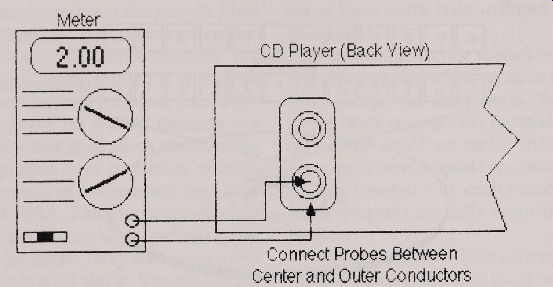
Fig. 3-8. A way to test the output level of a CD player. You must play
a test disc with a constant 0 dB tone.
The output level on the headphone jack is not standard on CD players, and also varies widely.
Again, the better players have a level control so you can turn up the headphone volume to suit your ast e. If your player lacks a variable headphone conrol, and the sound is too loud, use headphones equipped with a volume control, or use a headphone at tenuat or, available at electronics stores.
SPARS CODE
The SPARS Code describes the recording process used in making a compact disc. The three letter code considers the original, mixing, and mastering recorders, any of which can be either analog or digital. The best results are usually ob tained when all three recorders are the digital variety (Fig. 3-9).
Keep in mind that the SPARS Code considers only the recording format used in the music making process. Audio special effects, reverberation, Ambisonic processing, and other elements are generally added in analog form. In the case of a fully digital recording, these effects are created by first converting the digital audio to analog form at the mixing console. After processing, the signal is reconverted to digital form, then recorded.
It should be noted that even a fully digital (DDD) disc may not be sonically perfect. The sound quality of a disc is no better than the engineering that put it there. Poorly placed microphones, faulty equipment, and amat eur mixing techniques may make a completely digital disc aurally intolerable.
When shopping for discs, don't be lulled into buying every Tr iple-D disc you find (which are currently rare). Choose your CDs as you would records or tapes: by listening to new songs on the radio, gat hering personal recommendations from fr iends and associat es, and reading disc reviews in magazines.
The SPARS Code was designed to remove the marketing fluf fthat can confuse buyers; yet not all disc publishers use it. Some CD publishers insist on using ridiculous catch phrases to promote their product. You’ll often find discs labeled "digitally mastered," which is like a bottled water company claiming their water is " wet."
By def inition all CDs must be digitally mastered, as explained in Section 1. A better description for the so-called digitally mastered disc is the AAD SPARS Code.
(AAA). A fully analog recording, from the original session to mastering. Since at least the mastering recorder must be digital to make a compact disc, this code is not applicable to CDs.
(AAD). Analog tape recorder used during session recording and subsequent mixing and/ or editing. A digital recorder was used to make the master. Currently, most discs are AAD.
(ADD). Analog tape recorder used during session recording. Digital recorders used during mixing (or editing ) and mastering.
(DDD). A fully digital recording.
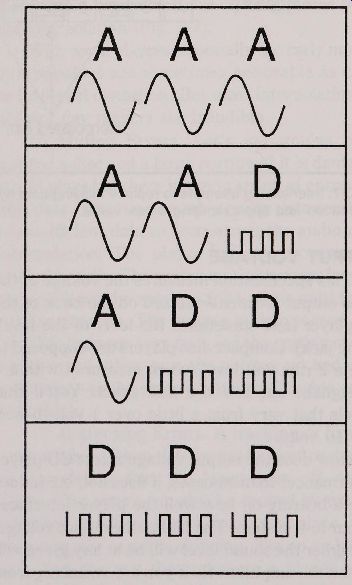
Fig. 3-9. The SPARS Code, and how to interpret it.
= = = =